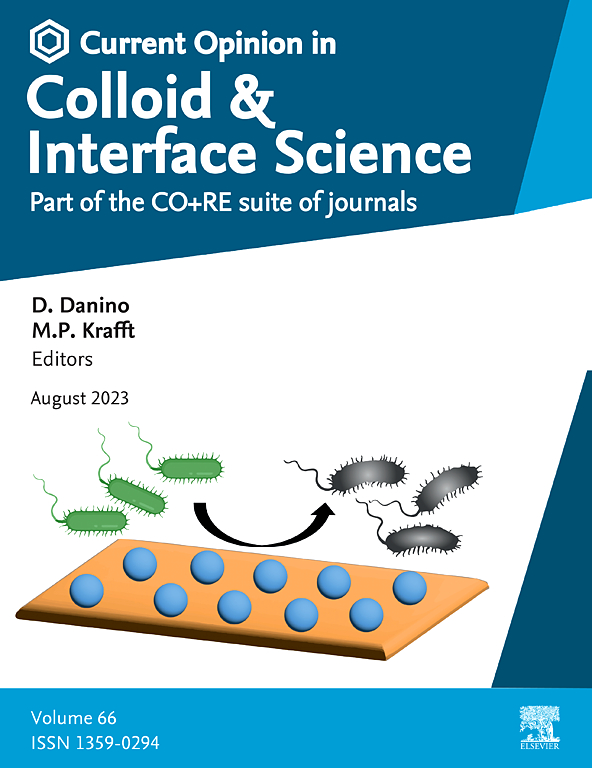Inverse nanoemulsions in particle fabrication
IF 7
2区 化学
Q1 CHEMISTRY, PHYSICAL
Current Opinion in Colloid & Interface Science
Pub Date : 2025-08-05
DOI:10.1016/j.cocis.2025.101951
引用次数: 0
Abstract
Nanoemulsions have emerged as highly versatile platforms for the synthesis of functional nanoparticles, offering nanoconfined environments that enable fine control over particle size, composition, and morphology. While traditionally used in fields such as food, cosmetics, and pharmaceuticals, their role in materials chemistry—particularly in the fabrication of organic, inorganic, and hybrid nanoparticles—has seen significant expansion in recent years. This review focuses specifically on inverse nanoemulsions, in which polar droplets are dispersed in an apolar continuous phase, as media for the controlled formation of nanostructured materials. We present an overview of recent developments from the last few years, organized around three main synthetic strategies: (i) the incorporation of all precursors into a single emulsion, (ii) the external addition of a reactive component to an existing emulsion of a precursor, and (iii) the fusion of two distinct emulsions, each carrying complementary reactants. These methodologies are discussed in terms of their mechanisms, advantages, and applicability to diverse material systems, with particular emphasis on advanced functional materials.
颗粒制备中的逆纳米乳液
纳米乳液已经成为合成功能性纳米粒子的高度通用的平台,它提供了纳米限制的环境,可以对颗粒大小、组成和形态进行精细控制。虽然传统上用于食品、化妆品和制药等领域,但它们在材料化学中的作用——特别是在有机、无机和混合纳米颗粒的制造方面——近年来得到了显著的扩展。这篇综述特别关注逆纳米乳液,其中极性液滴分散在极性连续相中,作为控制纳米结构材料形成的介质。我们概述了过去几年来的最新发展,围绕三种主要的合成策略进行组织:(i)将所有前驱体合并到单个乳液中,(ii)在现有的前驱体乳液中添加活性成分,以及(iii)融合两种不同的乳液,每种乳液都携带互补反应物。讨论了这些方法的机制、优势和对不同材料系统的适用性,特别强调了先进的功能材料。
本文章由计算机程序翻译,如有差异,请以英文原文为准。
求助全文
约1分钟内获得全文
求助全文
来源期刊
CiteScore
16.50
自引率
1.10%
发文量
74
审稿时长
11.3 weeks
期刊介绍:
Current Opinion in Colloid and Interface Science (COCIS) is an international journal that focuses on the molecular and nanoscopic aspects of colloidal systems and interfaces in various scientific and technological fields. These include materials science, biologically-relevant systems, energy and environmental technologies, and industrial applications.
Unlike primary journals, COCIS primarily serves as a guide for researchers, helping them navigate through the vast landscape of recently published literature. It critically analyzes the state of the art, identifies bottlenecks and unsolved issues, and proposes future developments.
Moreover, COCIS emphasizes certain areas and papers that are considered particularly interesting and significant by the Editors and Section Editors. Its goal is to provide valuable insights and updates to the research community in these specialized areas.

 求助内容:
求助内容: 应助结果提醒方式:
应助结果提醒方式:


